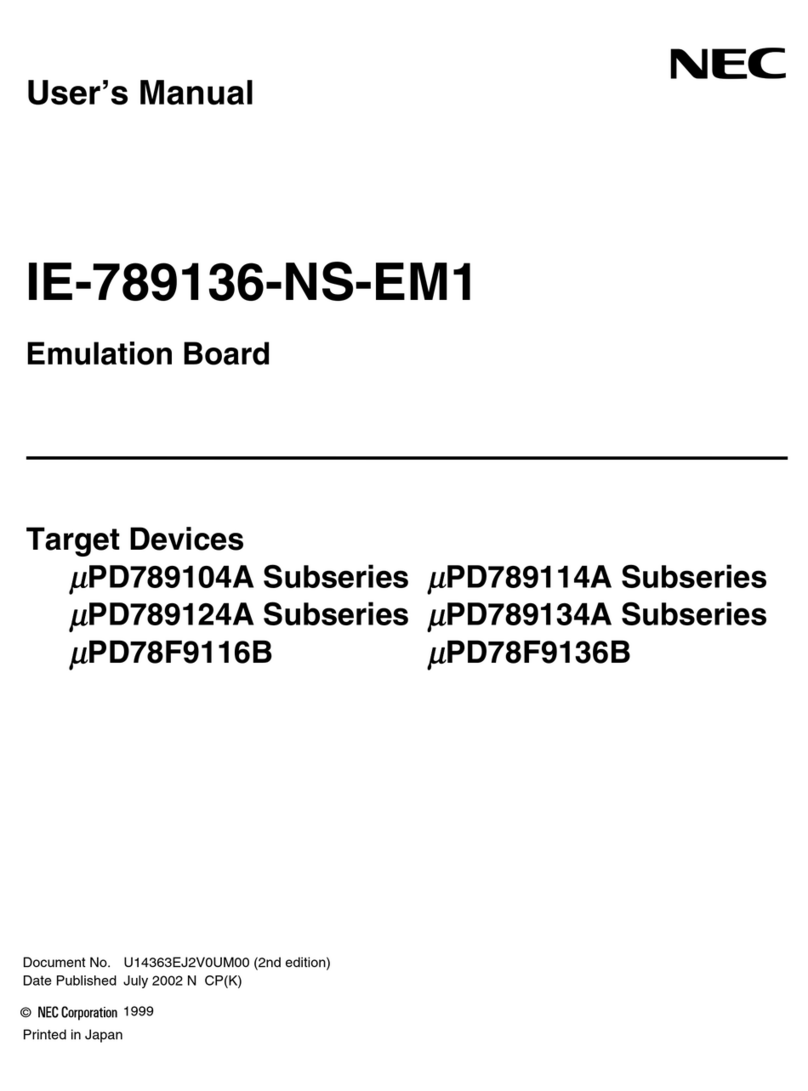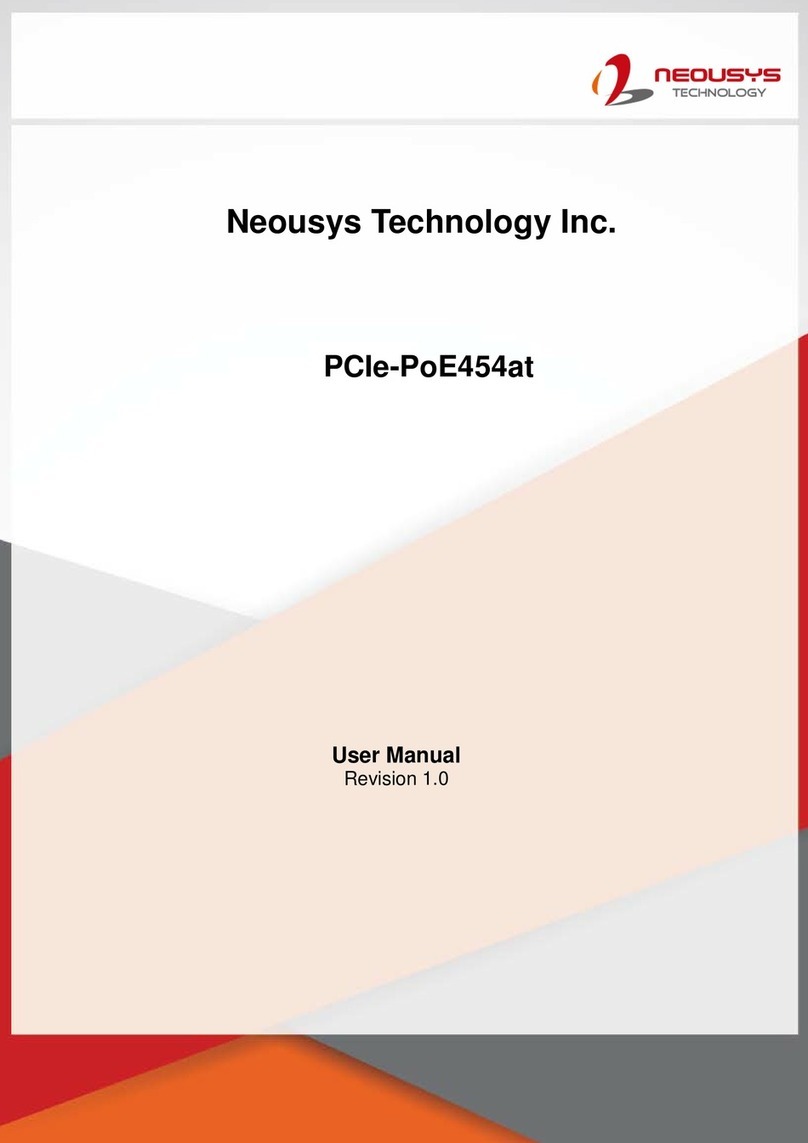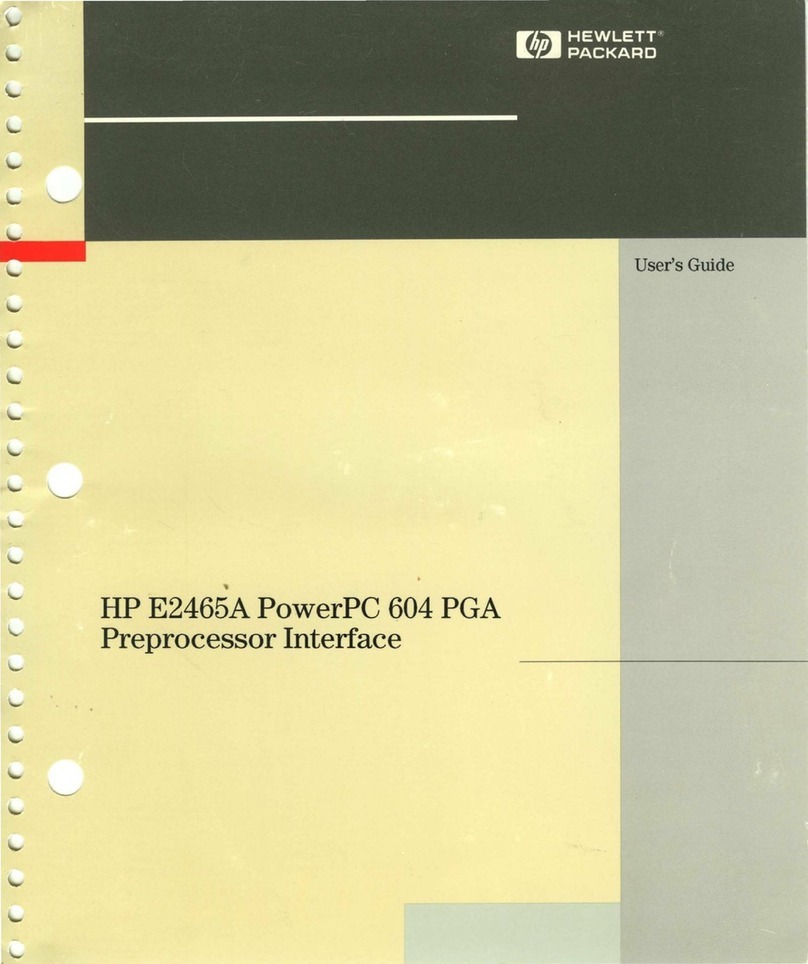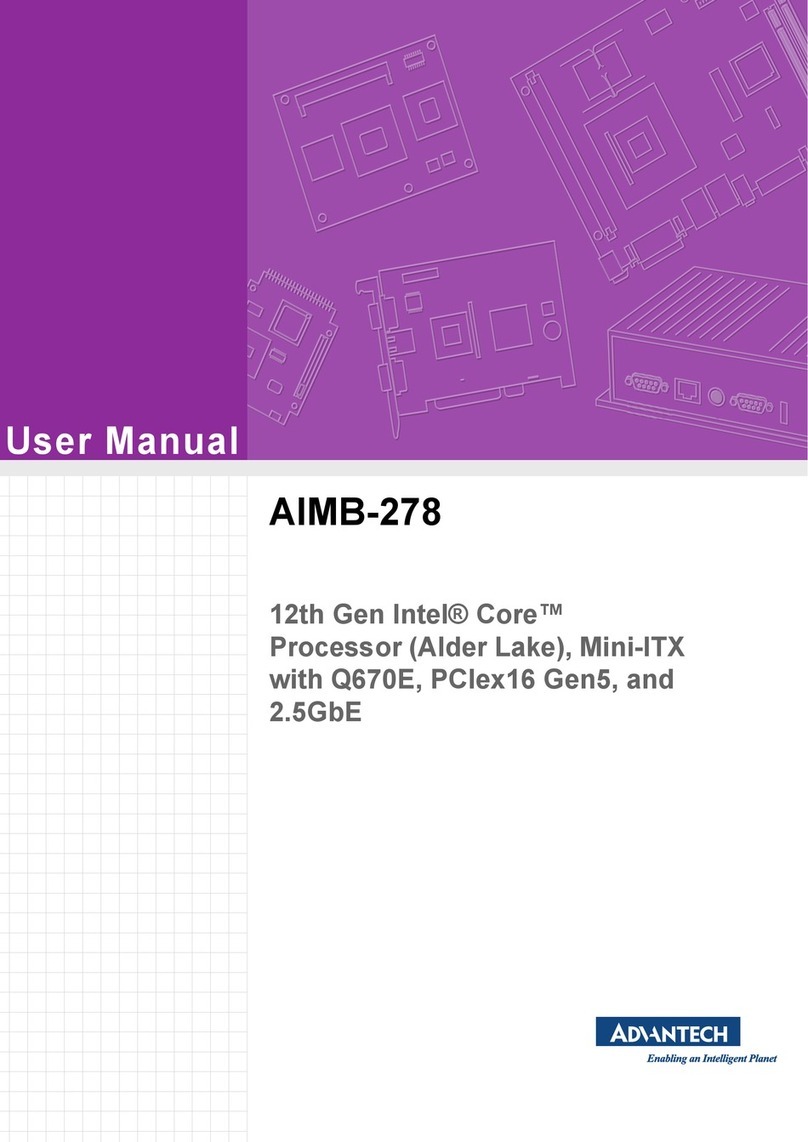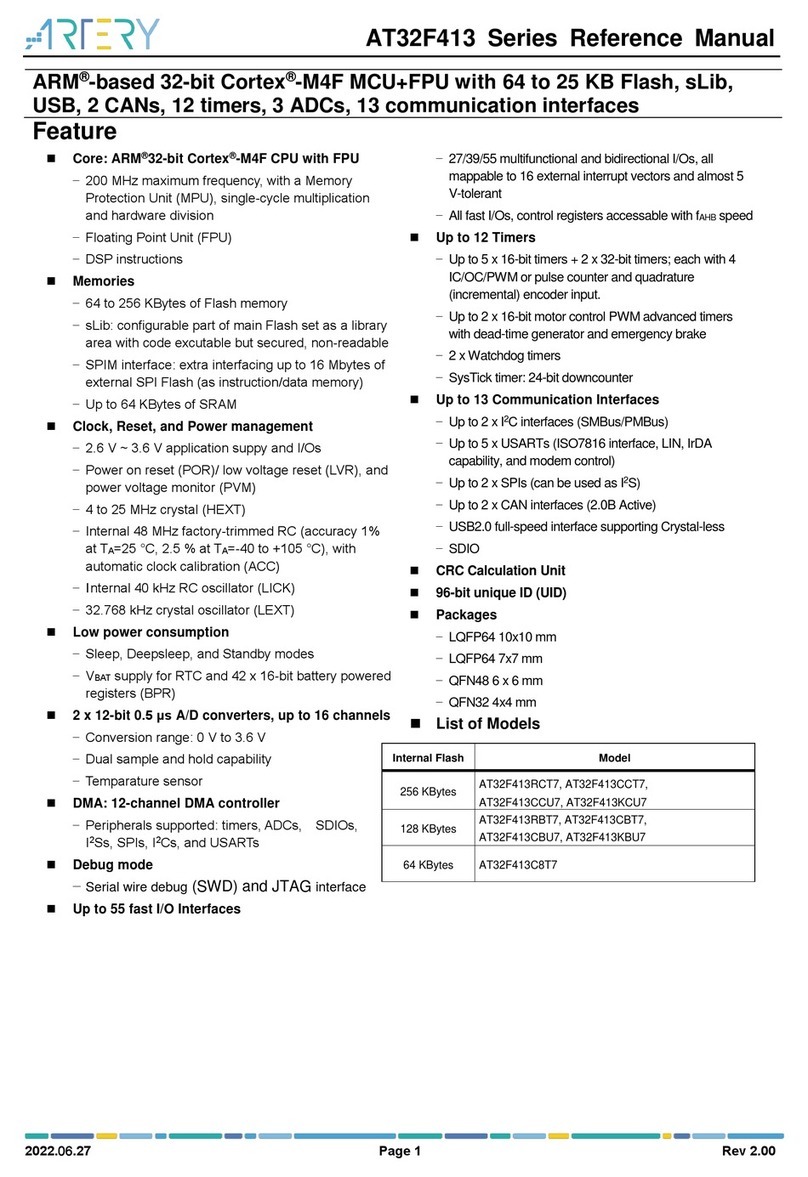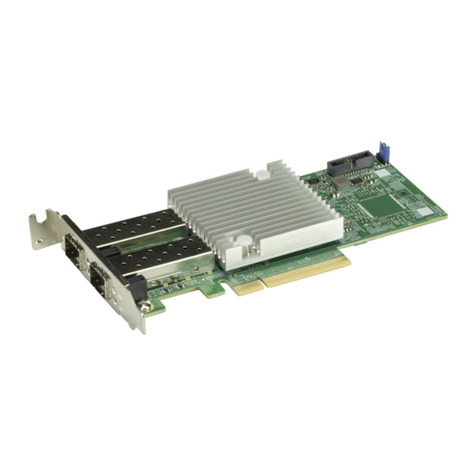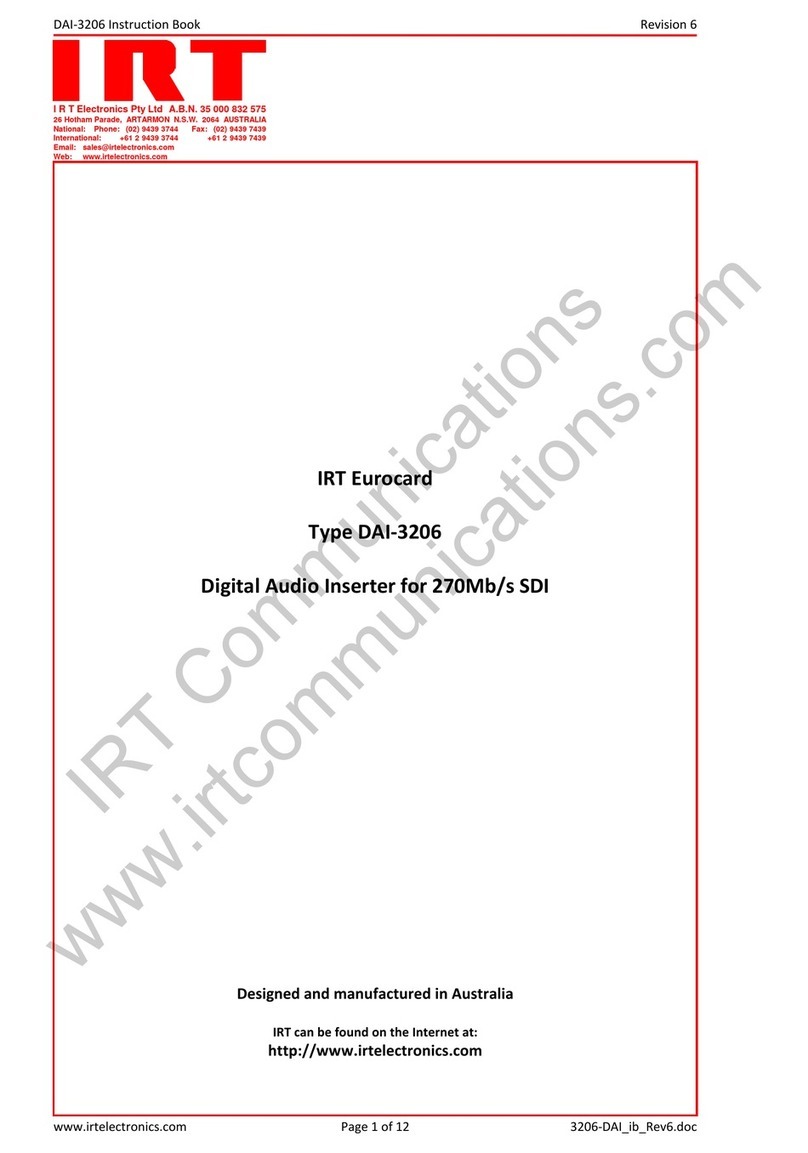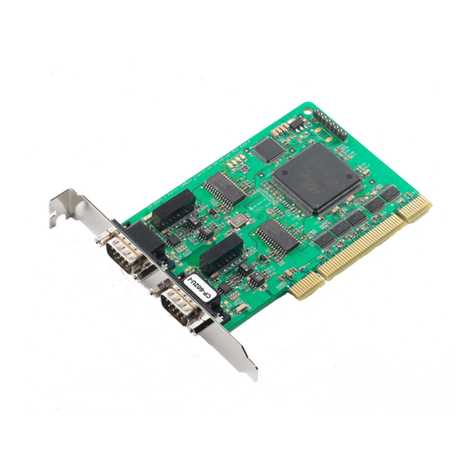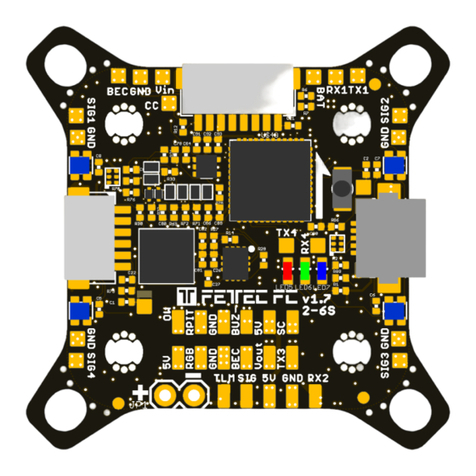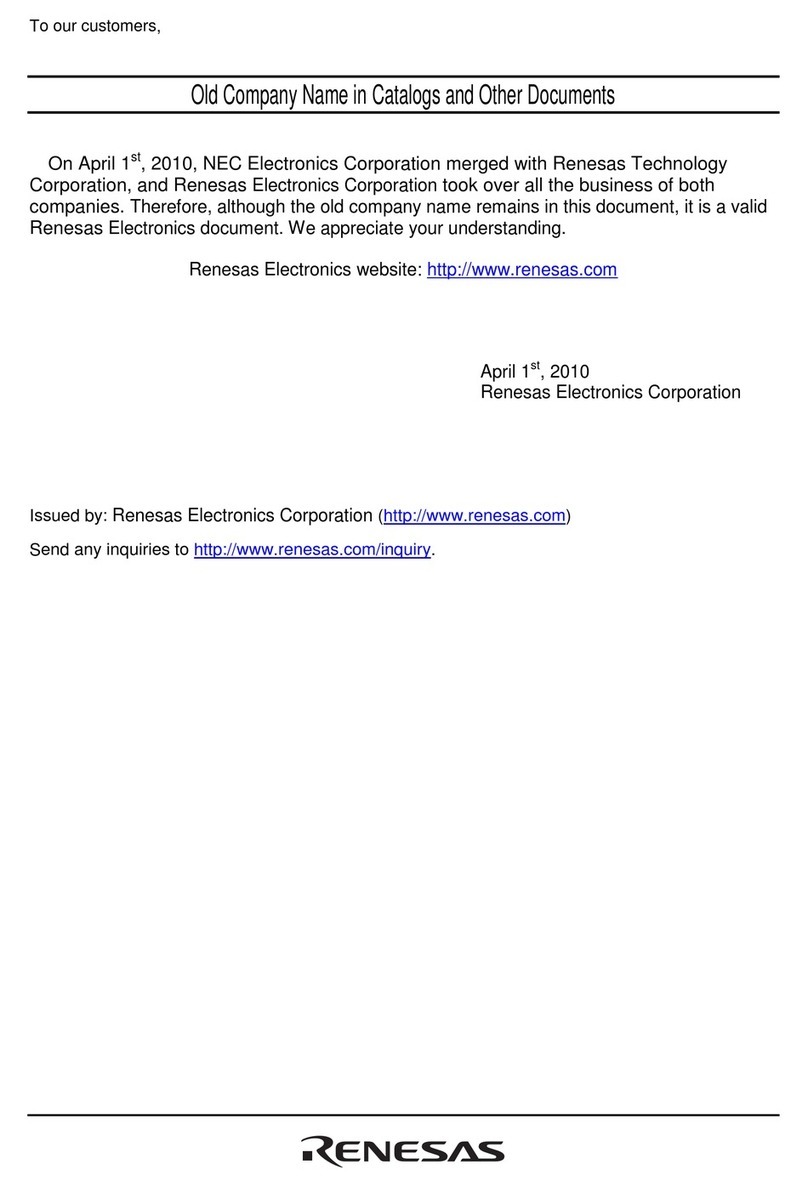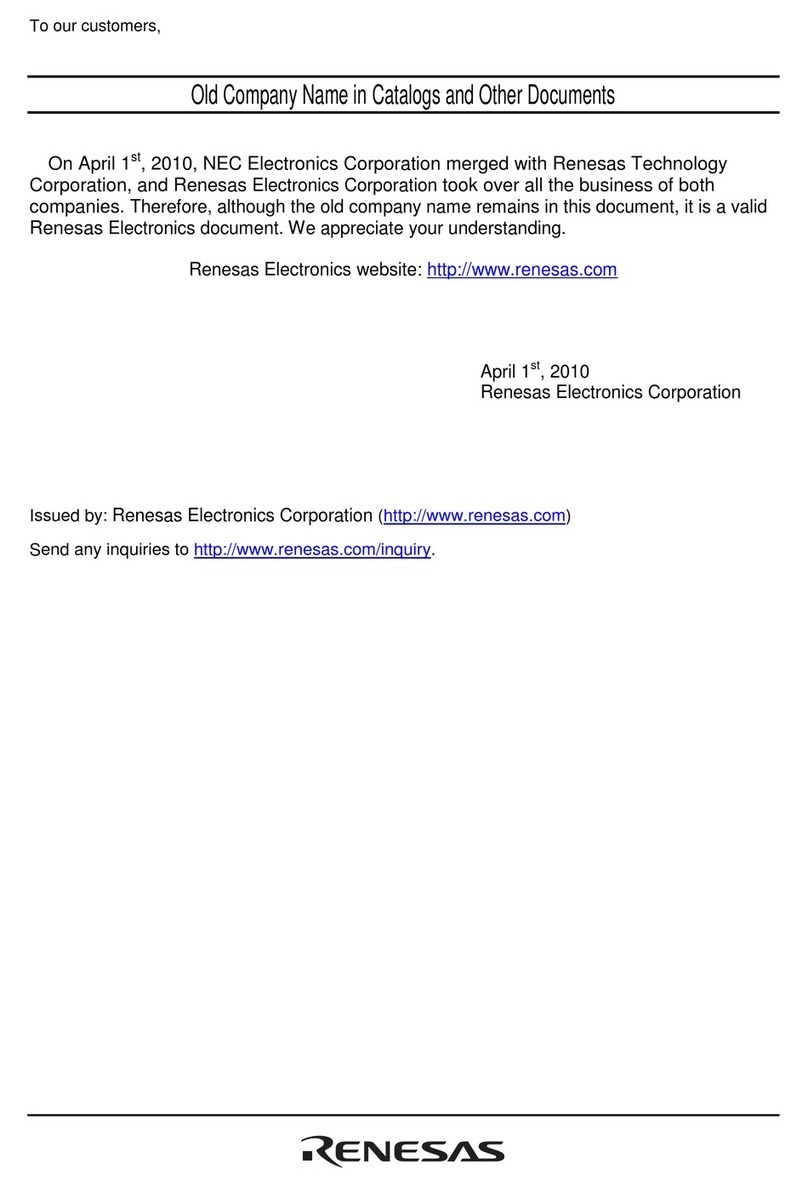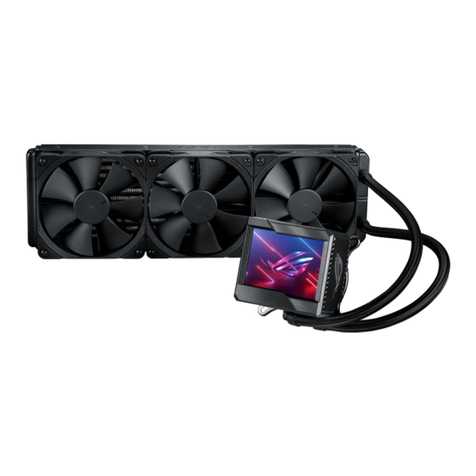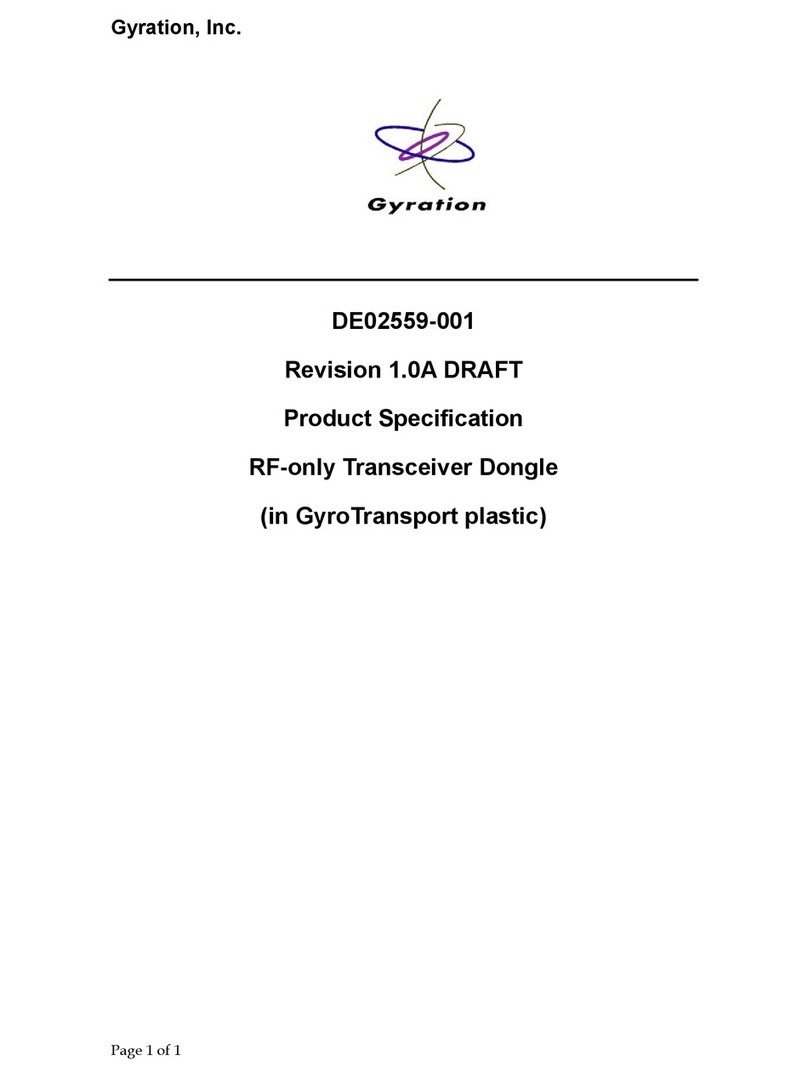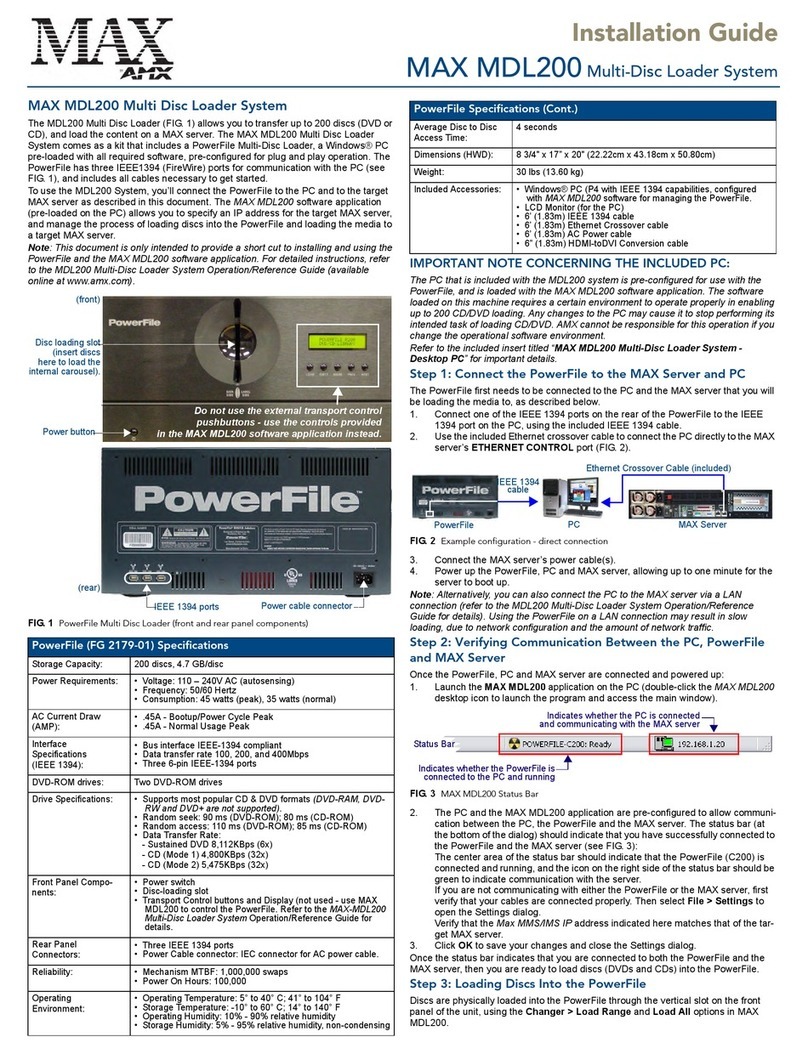Linx MT Series User manual

MT Series
Master Development System
User's Guide

Warning: Some customers may want Linx radio frequency (“RF”)
products to control machinery or devices remotely, including machinery
or devices that can cause death, bodily injuries, and/or property
damage if improperly or inadvertently triggered, particularly in industrial
settings or other applications implicating life-safety concerns (“Life and
Property Safety Situations”).
NO OEM LINX REMOTE CONTROL OR FUNCTION MODULE
SHOULD EVER BE USED IN LIFE AND PROPERTY SAFETY
SITUATIONS. No OEM Linx Remote Control or Function Module
should be modified for Life and Property Safety Situations. Such
modification cannot provide sufficient safety and will void the product’s
regulatory certification and warranty.
Customers may use our (non-Function) Modules, Antenna and
Connectors as part of other systems in Life Safety Situations, but
only with necessary and industry appropriate redundancies and
in compliance with applicable safety standards, including without
limitation, ANSI and NFPA standards. It is solely the responsibility
of any Linx customer who uses one or more of these products to
incorporate appropriate redundancies and safety standards for the Life
and Property Safety Situation application.
Do not use this or any Linx product to trigger an action directly
from the data line or RSSI lines without a protocol or encoder/
decoder to validate the data. Without validation, any signal from
another unrelated transmitter in the environment received by the module
could inadvertently trigger the action.
All RF products are susceptible to RF interference that can prevent
communication. RF products without frequency agility or hopping
implemented are more subject to interference. This module does not
have a frequency hopping protocol built in.
Do not use any Linx product over the limits in this data guide.
Excessive voltage or extended operation at the maximum voltage could
cause product failure. Exceeding the reflow temperature profile could
cause product failure which is not immediately evident.
Do not make any physical or electrical modifications to any Linx
product. This will void the warranty and regulatory and UL certifications
and may cause product failure which is not immediately evident.
!Table of Contents
1 Introduction
2 Ordering Information
2 MT Series Master Development Board
3 Using the Development Boards Manually
4 Troubleshooting
5 The Prototyping Area
5 The RF Area
6 The Transcoder Area
7 The USB Area
7 The Power Supply
8 Switch and Jumper Quick Reference
9 Installing the Software and Drivers
10 MT Series Master Development System Software
11 Resources
12 Schematics
14 Notes

––
1
Introduction
The MT Series transcoders are ideal for bidirectional remote control and
command, security, keyless entry, status monitoring and a host of similar
applications. They allow the status of up to eight buttons or contacts to
be securely transferred via a wireless link. The transcoder's rich feature
set also allows it to meet the needs of far more complex applications. The
Master Development System gives a designer all the tools necessary to
incorporate the transcoder into a product. This guide shows how to take
full advantage of the development boards included with the system. The
Master Development System serves several important functions:
• Rapid Evaluation: The boards allow the performance and features of the
MT Series transcoder to be quickly elevated.
• Design: It shows how to design with the transcoder and how to
interface with other components. It also demonstrates the overall
system function, making it easy to develop the initial system design.
• Prototype Development: It allows for additional circuitry to be placed
directly on the board so that it can act as the first prototype of the
product. All of the signals are available on a wire-wrap header for easy
connection to external circuitry.
This kit includes 2 fully-assembled development boards, 4 MT Series
transcoders* and two CW Series antennas. The boards are also populated
with LT Series RF transceiver modules and the QS Series USB modules.
* One part is soldered to each board, one extra is for use on your first prototype board.
MT Series Master Development System
User's Guide
Revised 3/18/2015
Figure 1: MT Series Master Development System

–– – –
23
Using the Development Boards Manually
Use of the development system is straightforward. After unpacking the
development boards, attach an antenna to each board, install the supplied
9V battery, remove the USB interface jumpers, and turn on the power
switches. The transcoders will have default settings from the factory and
will work straight out of the box. To create new addresses, follow these
steps:
1. Choose one board and press and hold the CRT/LRN button while
the ENC_SEL button is pressed to enter Create Mode. The Address
is randomized for as long as the CRT/LRN button is held down (the
ENC_SEL is not monitored once Create Mode has been entered). After
a brief press, release the button.
2. Once the CRT/LRN button is released, the MODE_IND LED begins to
flash to indicate that it is ready to accept status line assignments. Press
all of the status line buttons that are to be inputs, then press the CRT/
LRN button again or let the transcoder time out after 15 seconds.
3. Press the CRT/LRN button on the second board and the MODE_IND
LED starts flashing. On the first board, press each of the status line
buttons that are to be authorized. They can be pressed in any order,
individually or together. The transcoder on the second records the
Address of the transmitting transcoder. It records each status line
activation as the Control Permissions. Press the CRT/LRN button again
or let the transcoder time out after 15 seconds to exit Learn Mode.
4. Repeat steps 1 through 3 for the second board.
MT Series Master Development Board
1. 9V Battery
2. Power Jack
3. On-Off Switch
4. Voltage Regulator
5. Prototyping Area
6. QS Series USB Module
7. USB Interface Jumpers
8. RP-SMA Antenna Connector
9. LT Series Transceiver
10. Routing Switches
11. Break-Out Header
12. MT Series Transcoder
13. Function Switches
14. Indicator LEDs
15. CRT/LRN Button
16. ENC_SEL Button
17. ENC_SEL Switch
18. Status Line LEDs
19. Status Line Buttons
Ordering Information
Figure 2: Ordering Information
Ordering Information
Part Number Description
MDEV-LICAL-MT MT Series Master Development System
Figure 3: MT Series Master Development Board
4
1
2
3
10
6
7
8
14
5
9
11 13
12
15
16
17
18 19

–– – –
45
The Prototyping Area
The prototyping area contains
an area of plated through holes
so that external circuitry can
be placed on the board. This
circuitry can be interfaced with the
transcoder through the breakout
header to the right. At the bottom
is a row connected to the 3V
power supply and at the top is a
row connected to ground.
All of the status lines are
connected to a wire-wrap header
to the right, allowing easy access
from the prototyping area. The
TR_DATA, TR_SEL, TR_PDN and
CONFIRM lines are also available
on the header. This allows complete control of the entire system from the
prototyping area.
The RF Area
This board uses the LT Series transceiver for the
wireless link. R1 is connected to the LADJ line
of the transceiver to reduce the output power to
the approximate limit of Part 15.231 of the FCC
regulations. For applications where Part 15 limits are
not applicable or output levels can be legally raised,
R1 can be changed according to the graph in the LT
Series Transceiver Data Guide.
The three switches below the transceiver connect
the TR_DATA, TR_SEL and TR_PDN lines to either
the transceiver or the header in the Prototyping Area.
This prevents collisions on the lines resulting from
connecting the transcoder, transceiver, and external
circuitry to the same lines. If the switches are to the
left, then the transcoder is connected to the header; if they are to the right,
the transcoder is connected to the transceiver. Pads have been placed for
LEDs to indicate the states of the TR_SEL and PDN lines. These indicators
can be useful for debugging during development, but have been left to the
user to populate if desired.
Troubleshooting
If the boards fail to work out of the box, then try the following:
• Check the battery to make sure it is not dead
• Check to make sure that the USB interface jumpers are removed
• Make sure that the baud rate switches are set the same on both
boards. Note that the LT Series transceiver on the board can only
operate at 9,600bps.
• Make sure that the antenna is connected and has the correct polarity
connector.
• Make sure that the status lines are set correctly. The transcoder does
not activate a status line if it has been set as an input, so a status
line that is an input on one board needs to be an output on the other
board.
• Make sure that you set your Control Permissions correctly. If you have
not set the transcoder to use a particular line, then when you press
that line's button on one board, the MODE_IND LED on the other
board lights up, but the status line LED does not light up.
• Make sure that any advanced features that may have been activated
through the included software are set correctly. For example, if
Targeted Device Addressing has been enabled, then only the
transcoder with the correct address responds. These features may
need to be disabled to allow manual operation. The advanced features
are controlled through the Serial Interface Engine and can be accessed
with the included software.
If all of these appear to be in order, then call +1 800 736 6677 or email
Figure 4: The Prototyping Area
Figure 5: The RF Area

–– – –
67
The Transcoder Area
The transcoder is placed in the center
of the chain logo. To the right are two
function switches. SEL_BAUD sets the
baud rate of the transcoder. If the switch
is up, the baud rate is 28,800bps; if down,
the baud rate is 9,600bps. *Important*
Both transcoders must be set to the same
baud rate. The on-board transceiver is
only capable of operation at 9,600bps.
If the LATCH switch is up, then the status
lines are latched. If the switch is down,
then the status lines are momentary.
To the right of the function switches are a
column of status line LEDs and a column
of status line buttons. Each status line has one LED and one button, so
button S0 and LED D0 correspond to status line D0; S1 and D1 to line D1
and so forth. Pressing a button takes the status line high when the line is
set as an input. The LED activates when a line set as an output goes high.
There is no isolation between the LEDs and the buttons, so pressing the
button for a status line input also activates the LED. Resistors provide short
circuit protection if a button is pressed for an output line that is pulled low.
Beneath the transcoder are two LEDs. D8 is connected to the MODE_IND
line and lights up as described in the MT Transcoder Data Guide. D9
is connected to the CONFIRM line and lights up when the transcoder
receives a valid confirmation from a remote unit.
Beneath the LEDs is a button that is connected to the CRT/LRN line. This
button is used to create the Address, set the Control Permissions, and
learn an address as described in the MT Series Transcoder Data Guide.
Next to the CRT/LRN button is a button connected to the ENC_SEL line.
This button is used with the CRT/LRN button to create the Address and
set the Control Permissions. Next to the button is a switch that takes the
ENC_SEL line high so that the transcoder can be placed into Encoder Only
mode. If the switch is up, then the line is controlled by the button. If the
switch is down, then the line is connected to VCC.
Figure 6: The Transcoder Area
The USB Area
The development boards have a Linx SDM-USB-QS-S module for use with
a PC. This module is powered by the USB bus so no current is drawn from
the battery.
The jumpers to the right connect the USB module to the transcoder when
the USB interface is in use and should be disconnected when not in use.
U4 is a switch that connects the SER_IO line on the transcoder to either
the RXD or TXD lines on the USB module based on the state of the RTS
line. U5 is a level translator that converts the 5V signals from the USB
module to 3V for the transcoder and vice versa. The RX_IND LED to the left
of the module will flash when data is being received from the PC, and the
TX_IND line will flash when the module is sending data to the PC.
The Power Supply
The power supply consists of a standard 9V battery and a power
jack connected to a 3.0V voltage regulator. The regulator can provide
approximately 500mA of current to the prototyping area. If the added
circuitry needs more than this, then the designer must add an external
supply. If the circuit consistently draws more than 100mA of current, it
might be better to use the power jack, as the battery may run down fairly
quickly, reducing testing and development time.
The jack accepts a standard 5.5mm plug with the tip ground and the outer
shell 7 to 16VDC positive supply. A reverse voltage protection diode is
included on the board to protect the circuitry in case the voltage on the
plug is reversed, but it is still a good idea to double-check the polarity.
Figure 7: The USB Area

–– – –
89
Switch and Jumper Quick Reference
• SW1 – This switch activates power to the board.
• SW2 – This switch pulls the ENC_SEL line high so that the transcoder
can be used as an encoder only (positioned down) or operated with
button S9 (positioned up).
• SW3 – Labeled LATCH, this switch is connected to the LATCH line on
the transcoder. If the switch is positioned down, then the status line
outputs are momentary. If it is positioned up, then the status line outputs
follow the Latch Mask (all outputs latched unless changed through the
Serial Interface Engine).
• SW4 – Labeled SEL_BAUD, this switch sets the baud rate of the
transcoder to either 9,600bps (positioned down) or 28,800bps
(positioned up).
• SW5 – Labeled PDN, this switch connects the TR_PDN line on the
transcoder to either the PDN line of the transceiver (positioned to the
right) or to the prototyping header (positioned to the left).
• SW6 – Labeled TR_SEL, this switch connects the TR_SEL line on the
transcoder to either the T/R_SEL line on the transceiver (positioned to
the right) or to the prototyping header (positioned to the left).
• SW7 – Labeled DATA, this switch connects the TR_DATA line on the
transcoder to either the DATA line on the transceiver (positioned to the
right) or to the prototyping header (positioned to the left).
• S0–S7 – These buttons are connected to the status lines on the
transcoder
• S8 – This button is connected to the CRT/LRN line on the transcoder
• S9 – This button is connected to the ENC_SEL line on the transcoder
• J3 – This is a wire wrap header for use with the prototyping header.
Labels next to the header indicate which transcoder lines are connected
to which pins.
• J4 and J5 – These headers are for use with jumpers to connect the
USB module to the transcoder when using the Serial Interface Engine
with the included software. If the board is to be used manually, then the
jumpers should be removed as the USB interface section will hold the
lines in specific states.
Installing the Software and Drivers
The first time a QS module is plugged into a computer, Windows displays
the Found New Hardware Wizard, which guides the installation of the
drivers. The drivers are included on the CD, so point the wizard to the CD
when prompted. The drivers have not gone through Microsoft’s verification
process, so a message may appear warning of this. Click “Continue
Anyway” to finish the installation process.
Application Note AN-00201 (Installing the SDM-USB-QS-S Drivers)
describes the installation of the drivers in detail. The drivers should be
installed before running the Development Software.
The MT Series Master Development System Software Installer automatically
starts when the CD is inserted and the player in the figure below appears.
The View Documentation button shows a list of the application notes and
manuals related to the MT Series. Selecting one of these opens the file in
Adobe Acrobat. The Play Movie button plays a short video about Linx in the
Player Screen, which can be controlled with the Selection Keypad. Clicking
the button on the bottom right of the player opens the Linx Technologies
homepage in the computer’s default browser.
The View Documentation list also allows for the installation of Adobe
Acrobat Reader, so that the documents may be viewed, and Flash, which
may be required if the Linx video does not play correctly.
Clicking the Install Software button starts the Installation Wizard, which
guides the installation of the development software. The installer places the
software application, MT Series documentation, and USB drivers at the
installed location on the computer's hard drive.
Install Software
View Documentation Play Movie
Exit
Go to the
Linx Website
Selection Keypad
Player Screen
Figure 8: Software Installer

–– – –
10 11
MT Series Master Development System Software
The MT Series Master Development System software can be used in one
of two modes. The default mode provides basic control of the transcoder
through the serial interface engine.
The second mode is for full development of software designed to control
the transcoder through the SIE. It shows all of the commands, the packets
sent to the transcoder and the responses from the transcoder as well as
a full view of the transcoder’s memory bank. This allows full access and
control of the transcoder, aiding in product development.
Both modes interface to the development boards through the USB module,
demonstrating the simplicity of the hardware / software interface. Clicking a
button on one computer causes the development board to activate,
sending a command to the other development board. The other board then
outputs the command to another computer where an action takes place,
demonstrating the power and simplicity of the MT Series system. Note that
the USB Interface Jumpers must be installed in order for the software to
communicate with the transcoder.
Under the View Documentation label at the top of the screen are links
to the MT Series documents, including the full documentation for the
software. Please see this document for details on operation of the software.
Figure 9: The MT Series Master Development System Software
Resources
Support
For technical support, product documentation, application notes, regulatory
guidelines and software updates, visit www.linxtechnologies.com
RF Design Services
For customers who need help implementing Linx modules, Linx offers
design services including board layout assistance, programming,
certification advice and packaging design. For more complex RF solutions,
Apex Wireless, a division of Linx Technologies, creates optimized designs
with RF components and firmware selected for the customer’s application.
Call +1 800 736 6677 (+1 541 471 6256 if outside the United States) for
more information.
Antenna Factor Antennas
Linx’s Antenna Factor division has the
industry’s broadest selection of antennas
for a wide variety of applications.
For customers with specialized needs,
custom antennas and design services are available along with simulations
of antenna performance to speed development. Learn more at
www.linxtechnologies.com.
by

–– – –
12 13
TRANSCODER SECTION
POWER SUPPLY SECTION
USB SECTION
RF SECTION
B1
9V BATTERY
GND
SW1
POWER SWITCH
GND
+C1
220uF
GND
VCC
C2
10uF
GND
VCC
D14
DIODE400
Vb
SW Vb
Va
J1
PWRJACK
GND
GND
1
Vout 2
Vin 3
U6
VREGSIPEX-3V
RF
1
GND
2
NC
3
RSSI
4
A REF
5
ANALOG
6DATA 7
T/R SEL 8
PDN 9
GND 10
VCC 11
LADJ 12
U2
TRM-XXX-LT
RF 1
GND
2-5
ANT1
CONREVSMA001
GND
GND
VCC
R1
750 ohm
VCC
PDN
TRSEL
DATA
TRSELMT
PDNMT
DATAMT
SW6
TR_SEL
SW5
PDN
SW7
DATA
GND
D0
D1
D2
D3
D4
D5
D6
D7
PDN
TRSEL
DATA
VCC
GND
CONFIRM
1
2
3
4
5
6
7
8
9
10
11
12
13
14
J3
GND
GND
GND
GND
GND
GND
GND
GND
1
2
3
4
5
6
7
89
10
11
12
13
14
15
16
RN1
D0
D1
D2
D3
D4
D5
D6
D7
SER_IO
CRT/LRN
1
2
3
4
J5
GND
MODE_IND R11
1K
CTS
DATA_PC
RTS
1
2
3
J4
VCC
S4
D4
0805_LED
D4
VCC
S5
D5
0805_LED
D5
VCC
S6
D6
0805_LED
D6
VCC
S3
D3
0805_LED
D3
VCC
S7
D7
0805_LED
D7
VCC
S2
D2
0805_LED
D2
VCC
S1
D1
0805_LED
D1
VCC
S0
D0
0805_LED
D0
GND
R8
200
R12
150 ohm
R13
150 ohm
R14
150 ohm
R15
150 ohm
R16
150 ohm
R17
150 ohm
R18
150 ohm
R19
150 ohm
VCC
1
D6
2
D7
3
CRT/LRN
4
ENC_SEL
5
SER_IO
6
CONFIRM
7
TR_PDN
8
TR_SEL
9
TR_DATA
10 D0 11
D1 12
D2 13
MODE_IND 14
SEL_BAUD 15
LATCH 16
D3 17
D4 18
D5 19
GND 20
U1
LICAL-TRC-MT MODE_IND
GND
R5
200
GND
R7
200
VCC
GND
SW4
SEL_BAUD
VCC
GND
SW3
LATCH
D0
D1
D2
D3
D4
D5D6
D7
VC
CG
ND
D8
MODE_IND
D10
TR_PDN
TRSELMT
PDNMT
DATAMT
S8
CRT/LRN
SER_IO
CRT/LRN
GND
R3
100K
VCC
S9
ENC_SEL
GND
R2
100K
VCC
VCC
SW2
ENC_SEL
CONFIRM
GND
R6
200
D11
TR_SEL
GND
R4
200
D9
CONFIRM
LATCH
GND
R20
100K
DATA_PC
5V 1
DAT - 2
DAT+ 3
GND 4
GSHD
5
GSHD
6
J2
USB-B
GND
GND
GNDGND
R9
200
D12
RX_IND
R10
200
D13
TX_IND
I/O VCC2
1
GND
2
VL
3
I/O VL2
4I/O VL1 5
/3-STATE 6
VCC 7
I/O VCC1 8
U5
MAX3372E LEVEL TRANSLATOR
IN 1
VCC 2
GND 3
NC
4
COM
5
NO
6
U4
MAX4544 SWITCH
USBDP
1
USBDM
2
GND
3
VCC
4
SUSP IND
5
RX IND
6
TX IND
7
485 TX
8DTR 9
CTS 10
RTS 11
DATA OUT 12
DATA IN 13
DSR 14
DCD 15
RI 16
U3
SDM-USB-QS
VCCU
VCCU
GND
GND VCCU
VCC VCC
RTS
CTS
LATCH
Figure 10: Transcoder Section
Schematics
TRANSCODER SECTION
POWER SUPPLY SECTION
USB SECTION
RF SECTION
B1
9V BATTERY
GND
SW1
POWER SWITCH
GND
+C1
220uF
GND
VCC
C2
10uF
GND
VCC
D14
DIODE400
Vb
SW Vb
Va
J1
PWRJACK
GND
GND
1
Vout 2
Vin 3
U6
VREGSIPEX-3V
RF
1
GND
2
NC
3
RSSI
4
A REF
5
ANALOG
6DATA 7
T/R SEL 8
PDN 9
GND 10
VCC 11
LADJ 12
U2
TRM-XXX-LT
RF 1
GND
2-5
ANT1
CONREVSMA001
GND
GND
VCC
R1
750 ohm
VCC
PDN
TRSEL
DATA
TRSELMT
PDNMT
DATAMT
SW6
TR_SEL
SW5
PDN
SW7
DATA
GND
D0
D1
D2
D3
D4
D5
D6
D7
PDN
TRSEL
DATA
VCC
GND
CONFIRM
1
2
3
4
5
6
7
8
9
10
11
12
13
14
J3
GND
GND
GND
GND
GND
GND
GND
GND
1
2
3
4
5
6
7
89
10
11
12
13
14
15
16
RN1
D0
D1
D2
D3
D4
D5
D6
D7
SER_IO
CRT/LRN
1
2
3
4
J5
GND
MODE_IND R11
1K
CTS
DATA_PC
RTS
1
2
3
J4
VCC
S4
D4
0805_LED
D4
VCC
S5
D5
0805_LED
D5
VCC
S6
D6
0805_LED
D6
VCC
S3
D3
0805_LED
D3
VCC
S7
D7
0805_LED
D7
VCC
S2
D2
0805_LED
D2
VCC
S1
D1
0805_LED
D1
VCC
S0
D0
0805_LED
D0
GND
R8
200
R12
150 ohm
R13
150 ohm
R14
150 ohm
R15
150 ohm
R16
150 ohm
R17
150 ohm
R18
150 ohm
R19
150 ohm
VCC
1
D6
2
D7
3
CRT/LRN
4
ENC_SEL
5
SER_IO
6
CONFIRM
7
TR_PDN
8
TR_SEL
9
TR_DATA
10 D0 11
D1 12
D2 13
MODE_IND 14
SEL_BAUD 15
LATCH 16
D3 17
D4 18
D5 19
GND 20
U1
LICAL-TRC-MT MODE_IND
GND
R5
200
GND
R7
200
VCC
GND
SW4
SEL_BAUD
VCC
GND
SW3
LATCH
D0
D1
D2
D3
D4
D5D6
D7
VCCGND
D8
MODE_IND
D10
TR_PDN
TRSELMT
PDNMT
DATAMT
S8
CRT/LRN
SER_IO
CRT/LRN
GND
R3
100K
VCC
S9
ENC_SEL
GND
R2
100K
VCC
VCC
SW2
ENC_SEL
CONFIRM
GND
R6
200
D11
TR_SEL
GND
R4
200
D9
CONFIRM
LATCH
GND
R20
100K
DATA_PC
5V 1
DAT - 2
DAT+ 3
GND 4
GSHD
5
GSHD
6
J2
USB-B
GND
GND
GNDGND
R9
200
D12
RX_IND
R10
200
D13
TX_IND
I/O VCC2
1
GND
2
VL
3
I/O VL2
4I/O VL1 5
/3-STATE 6
VCC 7
I/O VCC1 8
U5
MAX3372E LEVEL TRANSLATOR
IN 1
VCC 2
GND 3
NC
4
COM
5
NO
6
U4
MAX4544 SWITCH
USBDP
1
USBDM
2
GND
3
VCC
4
SUSP IND
5
RX IND
6
TX IND
7
485 TX
8DTR 9
CTS 10
RTS 11
DATA OUT 12
DATA IN 13
DSR 14
DCD 15
RI 16
U3
SDM-USB-QS
VCCU
VCCU
GND
GND VCCU
VCC VCC
RTS
CTS
LATCH
TRANSCODER SECTION
POWER SUPPLY SECTION
USB SECTION
RF SECTION
B1
9V BATTERY
GND
SW1
POWER SWITCH
GND
+C1
220uF
GND
VCC
C2
10uF
GND
VCC
D14
DIODE400
Vb
SW Vb
Va
J1
PWRJACK
GND
GND
1
Vout 2
Vin 3
U6
VREGSIPEX-3V
RF
1
GND
2
NC
3
RSSI
4
A REF
5
ANALOG
6DATA 7
T/R SEL 8
PDN 9
GND 10
VCC 11
LADJ 12
U2
TRM-XXX-LT
RF 1
GND
2-5
ANT1
CONREVSMA001
GND
GND
VCC
R1
750 ohm
VCC
PDN
TRSEL
DATA
TRSELMT
PDNMT
DATAMT
SW6
TR_SEL
SW5
PDN
SW7
DATA
GND
D0
D1
D2
D3
D4
D5
D6
D7
PDN
TRSEL
DATA
VCC
GND
CONFIRM
1
2
3
4
5
6
7
8
9
10
11
12
13
14
J3
GND
GND
GND
GND
GND
GND
GND
GND
1
2
3
4
5
6
7
89
10
11
12
13
14
15
16
RN1
D0
D1
D2
D3
D4
D5
D6
D7
SER_IO
CRT/LRN
1
2
3
4
J5
GND
MODE_IND R11
1K
CTS
DATA_PC
RTS
1
2
3
J4
VCC
S4
D4
0805_LED
D4
VCC
S5
D5
0805_LED
D5
VCC
S6
D6
0805_LED
D6
VCC
S3
D3
0805_LED
D3
VCC
S7
D7
0805_LED
D7
VCC
S2
D2
0805_LED
D2
VCC
S1
D1
0805_LED
D1
VCC
S0
D0
0805_LED
D0
GND
R8
200
R12
150 ohm
R13
150 ohm
R14
150 ohm
R15
150 ohm
R16
150 ohm
R17
150 ohm
R18
150 ohm
R19
150 ohm
VCC
1
D6
2
D7
3
CRT/LRN
4
ENC_SEL
5
SER_IO
6
CONFIRM
7
TR_PDN
8
TR_SEL
9
TR_DATA
10 D0 11
D1 12
D2 13
MODE_IND 14
SEL_BAUD 15
LATCH 16
D3 17
D4 18
D5 19
GND 20
U1
LICAL-TRC-MT MODE_IND
GND
R5
200
GND
R7
200
VCC
GND
SW4
SEL_BAUD
VCC
GND
SW3
LATCH
D0
D1
D2
D3
D4
D5D6
D7
VCCGND
D8
MODE_IND
D10
TR_PDN
TRSELMT
PDNMT
DATAMT
S8
CRT/LRN
SER_IO
CRT/LRN
GND
R3
100K
VCC
S9
ENC_SEL
GND
R2
100K
VCC
VCC
SW2
ENC_SEL
CONFIRM
GND
R6
200
D11
TR_SEL
GND
R4
200
D9
CONFIRM
LATCH
GND
R20
100K
DATA_PC
5V 1
DAT - 2
DAT+ 3
GND 4
GSHD
5
GSHD
6
J2
USB-B
GND
GND
GNDGND
R9
200
D12
RX_IND
R10
200
D13
TX_IND
I/O VCC2
1
GND
2
VL
3
I/O VL2
4I/O VL1 5
/3-STATE6
VCC 7
I/O VCC1 8
U5
MAX3372E LEVEL TRANSLATOR
IN 1
VCC 2
GND 3
NC
4
COM
5
NO
6
U4
MAX4544 SWITCH
USBDP
1
USBDM
2
GND
3
VCC
4
SUSP IND
5
RX IND
6
TX IND
7
485 TX
8DTR 9
CTS 10
RTS 11
DATA OUT 12
DATA IN 13
DSR 14
DCD 15
RI 16
U3
SDM-USB-QS
VCCU
VCCU
GND
GND VCCU
VCC VCC
RTS
CTS
LATCH
Figure 11: Power Supply Section
Figure 12: USB Section
TRANSCODER SECTION
POWER SUPPLY SECTION
USB SECTION
RF SECTION
B1
9V BATTERY
GND
SW1
POWER SWITCH
GND
+C1
220uF
GND
VCC
C2
10uF
GND
VCC
D14
DIODE400
Vb
SW Vb
Va
J1
PWRJACK
GND
GND
1
Vout 2
Vin 3
U6
VREGSIPEX-3V
RF
1
GND
2
NC
3
RSSI
4
A REF
5
ANALOG
6DATA 7
T/R SEL 8
PDN 9
GND 10
VCC 11
LADJ 12
U2
TRM-XXX-LT
RF 1
GND
2-5
ANT1
CONREVSMA001
GND
GND
VCC
R1
750 ohm
VCC
PDN
TRSEL
DATA
TRSELMT
PDNMT
DATAMT
SW6
TR_SEL
SW5
PDN
SW7
DATA
GND
D0
D1
D2
D3
D4
D5
D6
D7
PDN
TRSEL
DATA
VCC
GND
CONFIRM
1
2
3
4
5
6
7
8
9
10
11
12
13
14
J3
GND
GND
GND
GND
GND
GND
GND
GND
1
2
3
4
5
6
7
89
10
11
12
13
14
15
16
RN1
D0
D1
D2
D3
D4
D5
D6
D7
SER_IO
CRT/LRN
1
2
3
4
J5
GND
MODE_IND R11
1K
CTS
DATA_PC
RTS
1
2
3
J4
VCC
S4
D4
0805_LED
D4
VCC
S5
D5
0805_LED
D5
VCC
S6
D6
0805_LED
D6
VCC
S3
D3
0805_LED
D3
VCC
S7
D7
0805_LED
D7
VCC
S2
D2
0805_LED
D2
VCC
S1
D1
0805_LED
D1
VCC
S0
D0
0805_LED
D0
GND
R8
200
R12
150 ohm
R13
150 ohm
R14
150 ohm
R15
150 ohm
R16
150 ohm
R17
150 ohm
R18
150 ohm
R19
150 ohm
VCC
1
D6
2
D7
3
CRT/LRN
4
ENC_SEL
5
SER_IO
6
CONFIRM
7
TR_PDN
8
TR_SEL
9
TR_DATA
10 D0 11
D1 12
D2 13
MODE_IND 14
SEL_BAUD 15
LATCH 16
D3 17
D4 18
D5 19
GND 20
U1
LICAL-TRC-MT MODE_IND
GND
R5
200
GND
R7
200
VCC
GND
SW4
SEL_BAUD
VCC
GND
SW3
LATCH
D0
D1
D2
D3
D4
D5D6
D7
VCCGND
D8
MODE_IND
D10
TR_PDN
TRSELMT
PDNMT
DATAMT
S8
CRT/LRN
SER_IO
CRT/LRN
GND
R3
100K
VCC
S9
ENC_SEL
GND
R2
100K
VCC
VCC
SW2
ENC_SEL
CONFIRM
GND
R6
200
D11
TR_SEL
GND
R4
200
D9
CONFIRM
LATCH
GND
R20
100K
DATA_PC
5V 1
DAT - 2
DAT+ 3
GND 4
GSHD
5
GSHD
6
J2
USB-B
GND
GND
GNDGND
R9
200
D12
RX_IND
R10
200
D13
TX_IND
I/O VCC2
1
GND
2
VL
3
I/O VL2
4I/O VL1 5
/3-STATE 6
VCC 7
I/O VCC1 8
U5
MAX3372E LEVEL TRANSLATOR
IN 1
VCC 2
GND 3
NC
4
COM
5
NO
6
U4
MAX4544 SWITCH
USBDP
1
USBDM
2
GND
3
VCC
4
SUSP IND
5
RX IND
6
TX IND
7
485 TX
8DTR 9
CTS 10
RTS 11
DATA OUT 12
DATA IN 13
DSR 14
DCD 15
RI 16
U3
SDM-USB-QS
VCCU
VCCU
GND
GND VCCU
VCC VCC
RTS
CTS
LATCH
Figure 13: RF Section

–– – –
14 15
Notes

Disclaimer
Linx Technologies is continually striving to improve the quality and function of its products. For this reason, we
reserve the right to make changes to our products without notice. The information contained in this Data Guide
is believed to be accurate as of the time of publication. Specifications are based on representative lot samples.
Values may vary from lot-to-lot and are not guaranteed. “Typical” parameters can and do vary over lots and
application. Linx Technologies makes no guarantee, warranty, or representation regarding the suitability of any
product for use in any specific application. It is the customer’s responsibility to verify the suitability of the part for
the intended application. NO LINX PRODUCT IS INTENDED FOR USE IN ANY APPLICATION WHERE THE SAFETY
OF LIFE OR PROPERTY IS AT RISK.
Linx Technologies DISCLAIMS ALL WARRANTIES OF MERCHANTABILITY AND FITNESS FOR A PARTICULAR
PURPOSE. IN NO EVENT SHALL LINX TECHNOLOGIES BE LIABLE FOR ANY OF CUSTOMER’S INCIDENTAL OR
CONSEQUENTIAL DAMAGES ARISING IN ANY WAY FROM ANY DEFECTIVE OR NON-CONFORMING PRODUCTS
OR FOR ANY OTHER BREACH OF CONTRACT BY LINX TECHNOLOGIES. The limitations on Linx Technologies’
liability are applicable to any and all claims or theories of recovery asserted by Customer, including, without
limitation, breach of contract, breach of warranty, strict liability, or negligence. Customer assumes all liability
(including, without limitation, liability for injury to person or property, economic loss, or business interruption) for
all claims, including claims from third parties, arising from the use of the Products. The Customer will indemnify,
defend, protect, and hold harmless Linx Technologies and its officers, employees, subsidiaries, affiliates,
distributors, and representatives from and against all claims, damages, actions, suits, proceedings, demands,
assessments, adjustments, costs, and expenses incurred by Linx Technologies as a result of or arising from any
Products sold by Linx Technologies to Customer. Under no conditions will Linx Technologies be responsible for
losses arising from the use or failure of the device in any application, other than the repair, replacement, or refund
limited to the original product purchase price. Devices described in this publication may contain proprietary,
patented, or copyrighted techniques, components, or materials. Under no circumstances shall any user be
conveyed any license or right to the use or ownership of such items.
©2015 Linx Technologies. All rights reserved.
The stylized Linx logo, Wireless Made Simple, WiSE, CipherLinx and the stylized CL logo are trademarks of Linx Technologies.
Linx Technologies
159 Ort Lane
Merlin, OR, US 97532
Phone: +1 541 471 6256
Fax: +1 541 471 6251
www.linxtechnologies.com
Table of contents
